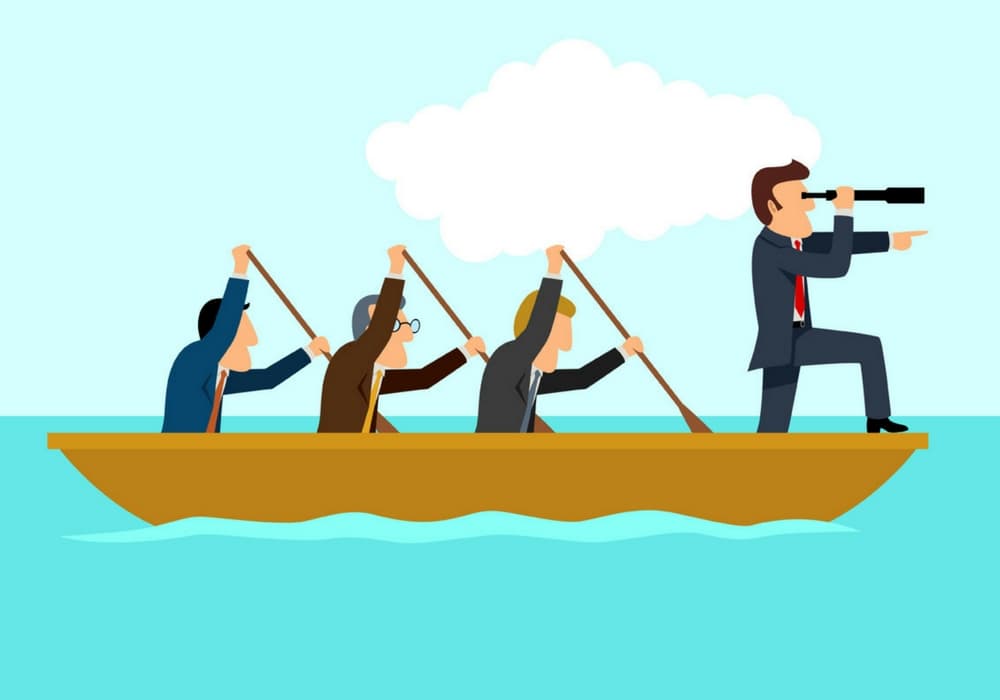
- Executive leaders set the business strategy and direction and make critical decisions with confidence and expertise.
- Developing a clear organizational vision and managing risks while considering external factors are critical for long-term success.
- Executives must prioritize efficient resource utilization and provide expert guidance on operational and management matters, enhancing company operations and empowering employees.
- Executives play a pivotal role in representing their organization during public appearances and negotiations with government officials. This responsibility is significant, as their expertise and confidence contribute to successful outcomes.
An executive leader is a key position in any organization, as they are responsible for setting the overall strategy and direction of the business. But what other roles do executive leaders fulfill? This article will take a closer look at the role of an executive leader and explore some of their essential responsibilities. By understanding these core duties better, you can better appreciate how critical it is for organizations to have strong leadership at the top.
Putting people over politics
Putting people over politics is an essential role of an executive leader. It is the act of prioritizing the well-being and interests of people before political gains. This leadership approach emphasizes empathy, communication, and collaboration over hierarchical, command-and-control structures.
This strategy helps to foster a positive work culture that builds trust and respect among team members. The CEO and Executive Director of SMRT Group, Ngien Hoon Ping, recently completed the Breakthrough Program for Senior Executives (BPSE) at IMD. During the program, he gained valuable knowledge on effectively uncovering insights to address critical issues hindering his organization’s success.
This experience has helped him prioritize his team members’ well-being and build a culture focused on people rather than political gains. By putting people first, executives can create a workplace culture that encourages creativity and innovation, leading to better outcomes and a more productive workforce.
Setting the overall strategy and direction of the business
Setting the overall strategy and direction of the business is perhaps the most important responsibility of an executive leader. Here are some key elements of this responsibility:
Developing a vision for the organization’s future
Developing a clear vision for an organization’s future is considered one of the most crucial roles of an executive leader. The job of a leader is to provide purpose, energy, and direction to his peers and employees. Managers and leaders hold distinct roles, with leaders responsible for propelling the organization forward.
While managers focus on task completion, leaders must exemplify their words through actions. For instance, SMRT Chairman Seah Moon Ming published several patents to foster innovation and patent creation within the company. Leaders can inspire and motivate their team toward a common goal by creating a clear future vision. This is crucial for success as it ensures everyone is aligned and working towards the same objectives.
A great visionary leader inspires and energizes his team throughout the organization, ensuring everyone understands the overarching mission and how they fit into the company. Executive leaders must continually ask questions, challenge the status quo and create an environment for risk-taking, experimentation, and learning.
Managing risk
Managing risk and considering external factors such as competition, industry trends, and customer demands is crucial for success. An executive leader who understands this knows that risk management involves identifying, assessing, and prioritizing risks and establishing strategies to mitigate or avoid them.
Additionally, executives must account for external factors, such as emerging trends and competitive pressures, when formulating business plans. Considering these external factors, an executive leader can develop a competitive strategy to resonate with customers and stay ahead of emerging trends.
Making sure that company resources are used efficiently
Company resources are finite and expensive, so an executive leader needs to ensure they are used most effectively. This means understanding how to allocate resources efficiently to maximize productivity and profitability. When resources such as time, money, and talent are wasted, the company’s bottom line and overall success can be harmed.
Therefore, an executive leader must possess the business acumen to prioritize these resources and ensure their efficient use. Emphasizing this responsibility helps executives establish a culture of accountability and discipline within the organization and promotes financial stability while enhancing the overall business objectives. It also controls costs and improves investment in key areas critical for the company’s growth.
Guiding employees on operations & management issues
Guiding employees on operations and management issues is a crucial responsibility of an executive leader, as it ensures the smooth functioning of business operations. It involves providing direction, setting goals, and supporting employees to achieve them.
The executive leader has a unique perspective on the business, and guiding operations and management issues is part of utilizing this perspective. The executive leader’s role is to impart knowledge, skills, and experience to employees, enabling them to handle any issues they may encounter.
Representing the organization
An executive leader’s role is to represent the organization in public appearances or negotiations with government officials. This involves effectively presenting the organization’s goals and objectives and demonstrating its value to the public or government officials. This is important because it can affect the organization’s reputation and ability to secure funding or support.
An executive leader’s success in these situations can greatly impact the organization’s future. Therefore, the leader must have good communication skills and an understanding of the organization’s mission and values. They must also be able to effectively engage with public audiences and handle negotiations with government officials.
Executive leaders carry numerous responsibilities vital to the success of an organization. Understanding and appreciating the complexity of their role is crucial in recognizing the significance of strong leadership. With their expertise, organizations can reach new heights and achieve long-term success.






